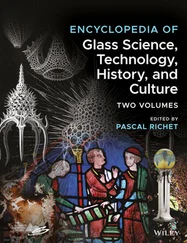John Pollen - British Manufacturing Industries - Pottery, Glass and Silicates, Furniture and Woodwork.
Здесь есть возможность читать онлайн «John Pollen - British Manufacturing Industries - Pottery, Glass and Silicates, Furniture and Woodwork.» — ознакомительный отрывок электронной книги совершенно бесплатно, а после прочтения отрывка купить полную версию. В некоторых случаях можно слушать аудио, скачать через торрент в формате fb2 и присутствует краткое содержание. ISBN: , Жанр: foreign_antique, foreign_prose, на английском языке. Описание произведения, (предисловие) а так же отзывы посетителей доступны на портале библиотеки ЛибКат.
- Название:British Manufacturing Industries: Pottery, Glass and Silicates, Furniture and Woodwork.
- Автор:
- Жанр:
- Год:неизвестен
- ISBN:http://www.gutenberg.org/ebooks/38953
- Рейтинг книги:5 / 5. Голосов: 1
-
Избранное:Добавить в избранное
- Отзывы:
-
Ваша оценка:
- 100
- 1
- 2
- 3
- 4
- 5
British Manufacturing Industries: Pottery, Glass and Silicates, Furniture and Woodwork.: краткое содержание, описание и аннотация
Предлагаем к чтению аннотацию, описание, краткое содержание или предисловие (зависит от того, что написал сам автор книги «British Manufacturing Industries: Pottery, Glass and Silicates, Furniture and Woodwork.»). Если вы не нашли необходимую информацию о книге — напишите в комментариях, мы постараемся отыскать её.
British Manufacturing Industries: Pottery, Glass and Silicates, Furniture and Woodwork. — читать онлайн ознакомительный отрывок
Ниже представлен текст книги, разбитый по страницам. Система сохранения места последней прочитанной страницы, позволяет с удобством читать онлайн бесплатно книгу «British Manufacturing Industries: Pottery, Glass and Silicates, Furniture and Woodwork.», без необходимости каждый раз заново искать на чём Вы остановились. Поставьте закладку, и сможете в любой момент перейти на страницу, на которой закончили чтение.
Интервал:
Закладка:
As the pottery trade was taking root in the district, it is no wonder that we find many intelligent manufacturers doing their best to improve it and make it profitable. Eminent amongst them was Josiah Wedgwood, whose name as a potter is never likely to perish. For particulars concerning his private life, trade, and manufacture, there are two excellent books, by Miss Meteyard and Mr. Llewellyn Jewitt, in which every matter of interest about him has been carefully entered. Born at Burslem, in 1730, of a family of potters, he began by serving his apprenticeship as a thrower under his brother, and must have settled in business very early, as he had had already two partners when he set up on his own account, in 1759, being then only twenty-nine years of age. His first attempts seem to have been directed to making a green ware, that is, a white ware covered with a glaze of that colour, which he succeeded in getting particularly bright; and also to the tortoiseshell, which had its surface mottled with glazes differently stained, and which, by their blending when they are fused in the oven, present some analogy with the works of Palissy.
One of Wedgwood's decided successes was, perfecting the white cream-colour ware, which was so superior to anything done before, that it commanded at once a great sale at home and abroad. Queen Charlotte admired it much, and, in consequence of her patronage, it took the name of Queen's ware, under which it was known for a long time. It is light, of a pleasing colour, elegantly shaped, and in the hands of artists has proved an admirable material to paint upon.
It would take too long to enumerate all the improvements which Wedgwood effected in his trade in the second half of the last century, but I must mention as prominent amongst his works, the black Egyptian and jasper wares, in making which he had no assistance whatever, and which constitute two new and perfect types in pottery. From Wedgwood's origin and early labours, it is easy to guess that his instruction must have been limited; but he was a clear-minded and inquiring man, possessing that sort of intuition by which he could easily understand things, which in other people would have required preliminary studies; besides, he had a natural taste for art and a systematic way of going through his experiments, which were sure to bring them to a successful issue. It was his good fortune to be assisted by two men of superior intelligence, viz. Flaxman, the sculptor, who designed many of his shapes, and modelled for him an almost innumerable number of subjects for slabs and cameos; and Thomas Bentley, a distinguished scholar, with whom he was commercially connected, and whose knowledge of art he found of great utility.
When Wedgwood died, in 1795, the ceramic manufacture had extensively developed, and had extended from Burslem to the small towns in the neighbourhood. From all this it must appear that, although Wedgwood was the most brilliant type amongst the English potters of that period, the trade was already well established when he entered the business, and there was every probability, that it would become one of the staple industries of this country. To give all the credit to him would be an injustice to several men, who, like the two Josiah Spodes, effected great improvements, or brought into play new and useful materials.
When I speak of the china manufacture, it will be seen that, besides the Staffordshire potters, several very clever men at Bow, Chelsea, Plymouth, Worcester, Derby, and other places, were at work to establish the manufacture of the soft and hard porcelain, proving beyond a doubt, that most energetic efforts were being made to raise the pottery trade of England to the same level as that of France or Germany. If we did not then succeed in making soft china like that of Sèvres, or hard porcelain as good as the Dresden, we soon became the masters of the market as regards earthenware – a position that we are not likely to lose for many years to come. Amongst the circumstances which combine to make our position particularly strong, it is enough to mention our independence as regards the supply of the raw materials, and the abundance of our clays and fuel, of a better quality than those at the disposal of our competitors. Besides, the localization of this manufacture in Staffordshire has caused the concentration in this spot of an intelligent population, acquainted with the traditions, from which the different branches of the trade can be easily fed.
The soil of Staffordshire produces a variety of clays which are used for common ware; but the most important is the one called marl , which is fire-clay from the beds of the coal measures, used for making the "saggers," or clay boxes, in which the ware is placed before it is sent to the ovens. The quantity required for this purpose is very large, and it was of the utmost importance that such material should be good, cheap, and easily procured.
At present, however, the clays necessary to make china or earthenware are not found in Staffordshire, but are sent from the counties of Dorset, Devon, and the Duchy of Cornwall, where they constitute an important branch of commerce. It is a common occurrence to hear people, visiting Staffordshire for the first time, wonder at the apparently abnormal fact of an industry settling in a district where none of the requisite materials are to be found. I have mentioned in the preceding pages how it happened that the trade first settled in Burslem; and a short explanation will show that, although more perfect clays from distant counties had to be used, there was no need to change.
For baking pottery, the quantity of fuel required is comparatively large. When, independently of the ovens and kilns, we take into account what is absorbed by the steam-engines, preparation of materials, and warming of the shops, we find that for every ton of manufactured goods, at least three tons of coals are wanted, and that for decorated goods, it will take twice that quantity, and even more. As the districts from which the clays are sent have no coals, the advantage of paying the carriage on the smallest number of tons to be brought to the works becomes evident.
The potter's clay derives its origin from several felspathic rocks, which under various influences have been decomposed, and the finest portion washed away, to be collected in natural depressions of the soil, where it has formed beds of various thickness. Chemically speaking, it is a silicate of alumina in combination with water, with the addition, in small quantities, of different materials, such as potash, soda, lime, or iron, acting as fluxes on the silicate, which otherwise would give no signs of vitrification. The iron, which may exist in different states, has a colouring effect injurious to the clay, which, to be useful, must be almost free from it. When this condition occurs, the excellence of the clay is determined by the quantity of alumina that it contains. Pure silica, in the form of quartz, flint, or sand, is a very easy material to procure when wanted, but as no geological formation yields alumina in the pure state, no other can be got, besides that which already exists in the clays. It is a common error to say, that it is the silica which renders them refractory. It is true that pure silica can stand any amount of heat without fusing, but its readiness to combine with alkaline matter, and to form vitreous compounds, renders its use objectionable when heated with metallic oxides. An excess makes the wares brittle and unable to resist sudden changes of temperature, while alumina, on the contrary, gives these qualities, and with them the plasticity required for the working of the ware. From it the clays derive the property of absorbing and retaining a large quantity of water, and such is its affinity for it, that sometimes a red heat will hardly suffice to expel it completely. Alumina is a light material – silica a heavy one; and a potter ought to know approximatively in testing the density of a sample, whether it is rich or poor in either of the two. The reason why the clay deposits are richer in alumina than the rocks from which they originated, is explained by the lightness of this element, which, being kept in suspension in water for a longer time, was consequently carried farther, leaving the silicious refuse to settle on its way.
Читать дальшеИнтервал:
Закладка:
Похожие книги на «British Manufacturing Industries: Pottery, Glass and Silicates, Furniture and Woodwork.»
Представляем Вашему вниманию похожие книги на «British Manufacturing Industries: Pottery, Glass and Silicates, Furniture and Woodwork.» списком для выбора. Мы отобрали схожую по названию и смыслу литературу в надежде предоставить читателям больше вариантов отыскать новые, интересные, ещё непрочитанные произведения.
Обсуждение, отзывы о книге «British Manufacturing Industries: Pottery, Glass and Silicates, Furniture and Woodwork.» и просто собственные мнения читателей. Оставьте ваши комментарии, напишите, что Вы думаете о произведении, его смысле или главных героях. Укажите что конкретно понравилось, а что нет, и почему Вы так считаете.












![John Bruce - The Lettsomian Lectures on Diseases and Disorders of the Heart and Arteries in Middle and Advanced Life [1900-1901]](/books/749387/john-bruce-the-lettsomian-lectures-on-diseases-and-disorders-of-the-heart-and-arteries-in-middle-and-advanced-life-1900-1901-thumb.webp)